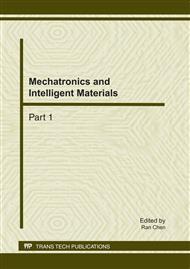[1]
I. C. Yeh: Modeling slump flow of concrete using second-order regressions and artificial neural networks. Cement & Concrete Composites, Vol. 29 (2007), pp.474-480.
DOI: 10.1016/j.cemconcomp.2007.02.001
Google Scholar
[2]
M. Y. Mansour: Predicting the shear strength of RC beams using ANN. Eng Struct, Vol. 26 (2004), pp.781-799.
Google Scholar
[3]
A. Baykasoğlu, T. Dereli, S. Tanıs: Prediction of cement strength using soft computing techniques. Cement and Concrete Research, 34(11) (2004), p.2083-(2090).
DOI: 10.1016/j.cemconres.2004.03.028
Google Scholar
[4]
L. C. Lien, in: Applications of Genetic Algorithms in Reinforced Learning, Master's thesis. Dept. of Civ. Engrg. and Engrg. Informatics, Chung Hua Unniversity, Hsin Chu, Taiwan (2005), in Chinese.
Google Scholar
[5]
G. E. Pedro, V. Sebasti´an, H. Francisco: A Survey on the Application of Genetic Programming to Classification. IEEE Transactions on Systems, Man, and Cybernetics-Part C: Applications and Reviews, 40(2) (2010), pp.121-144.
DOI: 10.1109/tsmcc.2009.2033566
Google Scholar
[6]
L. Chen: A study of applying macroevolutionary genetic programming to concrete strength estimation. Journal of Computing in Civil Engineering, ASCE, 17(4) (2003), pp.290-294.
DOI: 10.1061/(asce)0887-3801(2003)17:4(290)
Google Scholar
[7]
J. V. Ekaterina, Member, IEEE, F. S. Guido, Member, IEEE, D.D. Hertog: Order of Nonlinearity as a Complexity Measure for Models Generated by Symbolic Regression via Pareto Genetic Programming. IEEE Transactions on Evolutionary Computation 13(2) (2009).
DOI: 10.1109/tevc.2008.926486
Google Scholar
[8]
J. R. Koza, in: Genetic Programming: On the Programming of Computers by Means of Natural Selection. MIT Press (1992).
Google Scholar
[9]
I. C. Chen, in: Optimization the Mixture Design of High-performance Concrete by Neural Networks, Master's thesis. Dept. of Civ. Engrg. and Engrg. Informatics, Chung Hua Unniversity, Hsin Chu, Taiwan (2001), in Chinese.
Google Scholar
[10]
L. C. Lien, in: Applications of Genetic Algorithms in Reinforced Learning, Master's thesis. Dept. of Civ. Engrg. and Engrg. Informatics, Chung Hua Unniversity, Hsin Chu, Taiwan (2005), in Chinese.
Google Scholar


